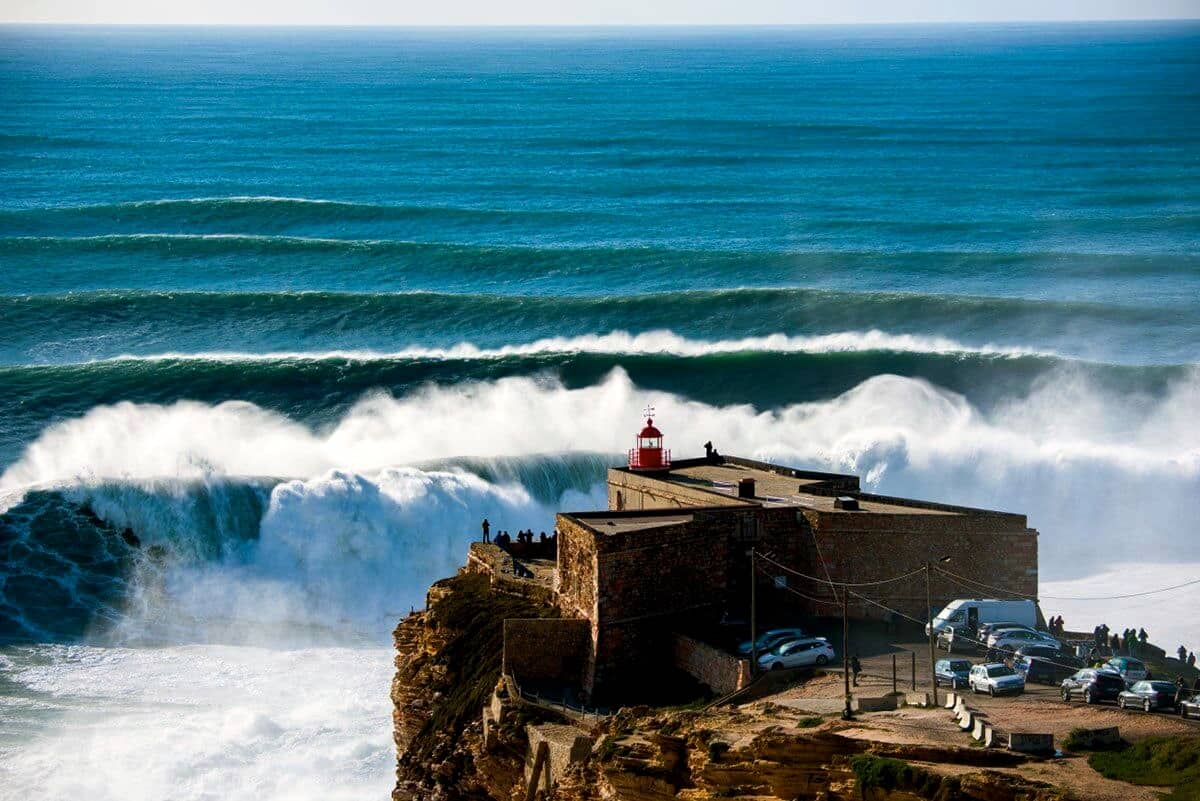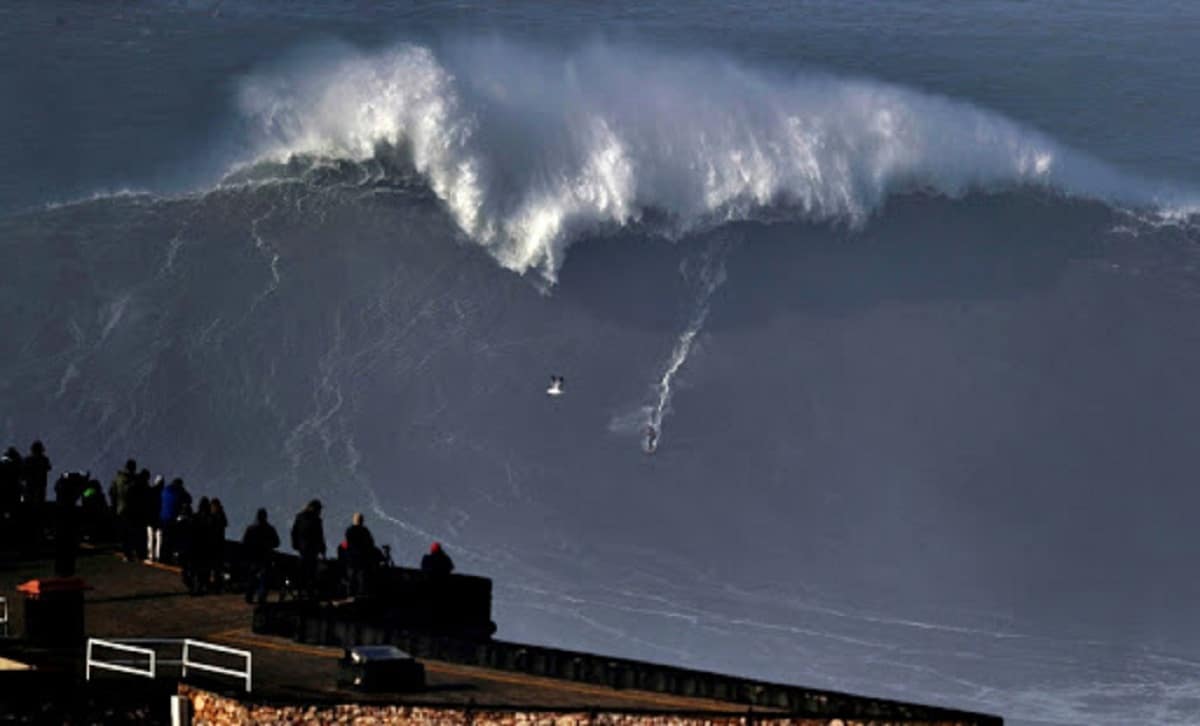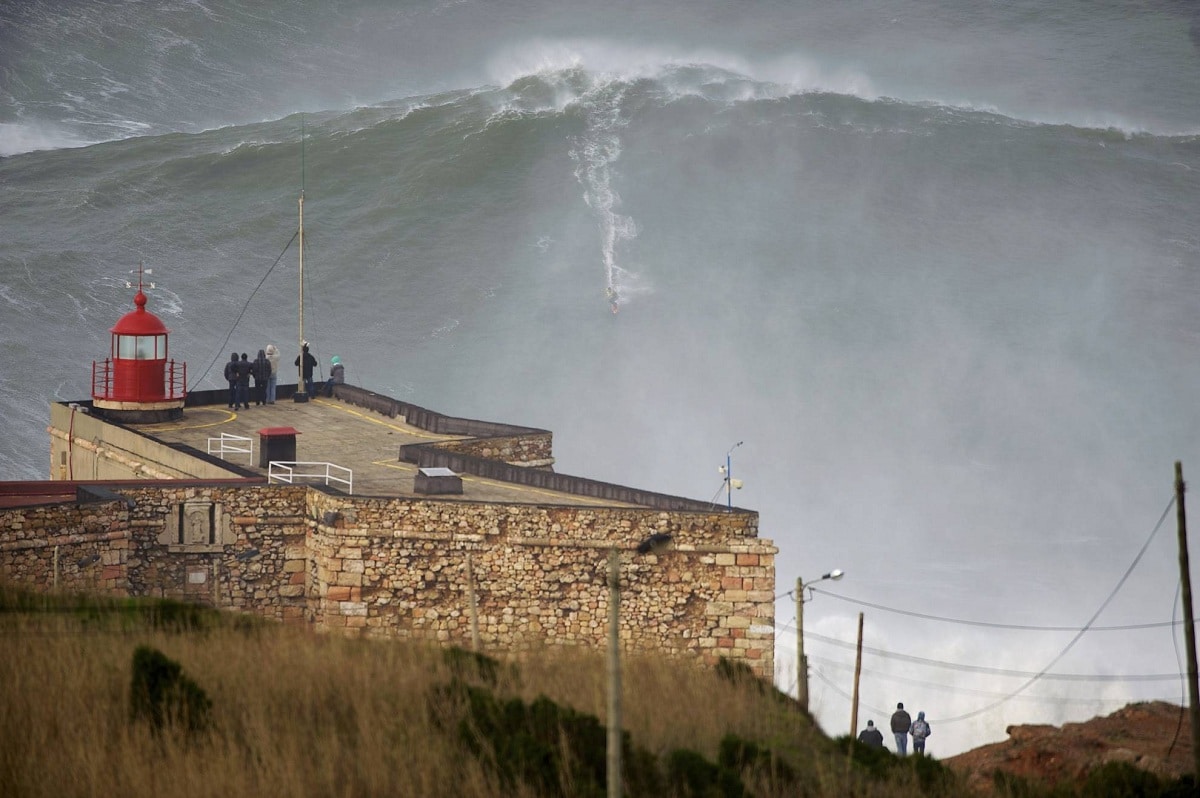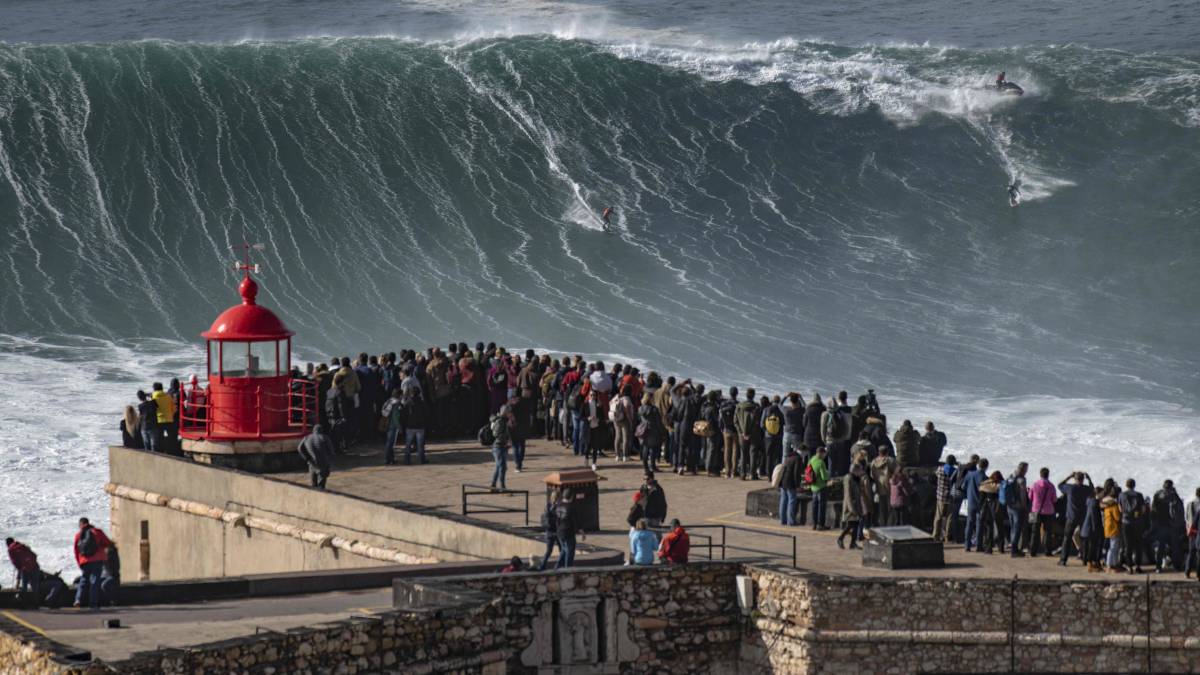
Every surfer has ever heard of the most gigantic waves on the planet. It's about the waves of Nazaré They are considered to be a type of gigantic waves that have broken Guinness world records for size. Beastly waves that every surfer dreams of sometime. Yet why are these gigantic waves occurring?
In this article we are going to tell you what the waves of Nazaré are and why they occur.
What are the waves of Nazaré

Nazaré is a very small but quite beautiful town where mainly fishermen live. Is found in the Portuguese area about 100 kilometers north of Lisbon. Not until many years ago was it unknown to most people. However, today this place is well known since there are the places where gigantic waves break. And it is that these waves are capable of breaking in front of its lighthouse and have an enormous size.
It is not only famous for surfers, but by all kinds of travelers and tourists unrelated to this sport. And this is one of the biggest waves ever surfed and considered to be true mountains of water. Many people wonder why it happens in this type of waves in this place. We will explain this in a simple way.
You have to know that many waves are formed by the depth differences that exist in marine morphology. We know that ocean currents are driven by wind and differences in temperature or salinity of the water. Therefore, as there are large differences in depths between the continental shelf and the canyon, there is a flow of water that causes large waves to occur.
The Nazaré canyon is considered to be the deepest marine gorge on the entire European coast and one of the deepest in the world. SIts extension covers about 230 kilometers and a depth of 5.000 meters. When a powerful storm surge occurs from the WNW and the Nazaré coasts a curious aspect occurs that involves several factors: the truck, the continental shelf and the coastal current. As a result, they form the biggest waves in the world.
Formation of the waves of Nazaré

When the waves are directed towards the shore of this town, it usually grows rapidly since there are two geomorphological variables that cause it. These geomorphological variables, which are basically the morphology of the marine part and the wind speed, are what cause this type of giant waves to occur. To better explain this, let's imagine that the Atlantic Ocean, being very deep, suddenly he finds a "step" that reduces the depth of the ocean almost suddenly. This change in ocean depth causes the swell to become compressed and project upward.
In addition, another aspect that generates this type of giant waves is that a water current is channeled along the coast in a north to south direction. This same current of water coming in the direction of the incoming waves is what contributes to further increase the height of the waves that reach the coast. For a greater effect, the back wave, also known as the projected water from the beach towards the sea, will increase the height of the incident waves by a few more meters. All these types of variables and situations make the waves of Nazaré hold a Guinness World Record for the biggest waves ever surfed.
It can be said that the formation of this type of giant waves has a chain effect. The first thing is the difference in depths of the marine morphology. That is, there are rocky areas and underwater mountains that have different attitudes that contrast the speed and depth with which the waves come and change when said depth returns. This difference in depth is what triggers an increase in the height of the wave and as the waves converge with the canyon the local water current increases. The last link in the chain is the counterwash that helps to further increase the level and height of the wave.
How are coastal waves predicted?

If you are a surfer who travels to different parts of the world to catch giant waves, the prediction of these waves becomes important. However, measuring waves in the open sea is a more difficult task than it seems. This is due to the fact that there are height variations that the buoys register and that does not allow distinguishing each wave individually. All the buoys are overlapping and the waves come from different directions. As a result, the swell in the open sea was used and is measured using statistical standards. This is, measurements used to make averages are the size of the waves.
On the other hand, being able to predict the height of the waves in coastal areas is a more direct process. And it is that the waves have to adopt a preferential direction as they get closer to the mainland. The separation that exists between the different waves is better delimited on the open sea coast. For this reason, you can easily measure the size of the waves in Nazaré and estimate how far the waves will actually reach. For this, mathematical models are used that take into account some parameters such as is the force of the wind and the direction in which it blows. You must also take into account some variables such as the state of the tides, the bottom swell and the underwater topography of the area in question.
These models are not capable of predicting with total precision the height that each wave will have individually. It only provides a figure that reflects a general height that the waves usually have when it reaches the coast. As we have mentioned before, statistical data are used that mix all the data obtained using means to elaborate what is known as the Gaussian bell.
I hope that with this information you can learn more about the waves of Nazaré.